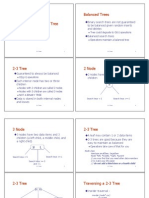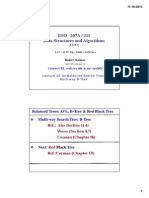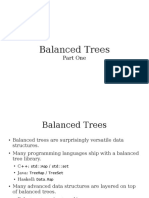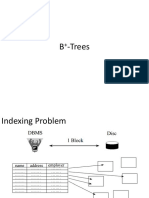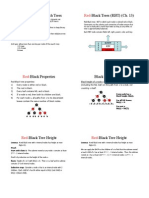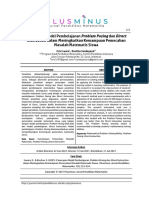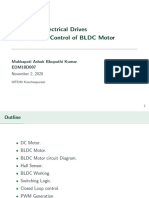0% found this document useful (0 votes)
115 views124 pagesB Trees Slides
The document provides an overview of B-trees, which are balanced tree data structures used to access data stored on slow storage media like disks. It describes key properties of B-trees including their minimum degree, height restrictions, and how searching, adding, and removing values are performed. Values can only be added or removed from leaf nodes, and internal nodes must maintain a minimum number of child pointers. The document explains techniques for balancing the tree during operations like splitting full nodes, pushing values between nodes, and rotating nodes.
Uploaded by
aaCopyright
© © All Rights Reserved
We take content rights seriously. If you suspect this is your content, claim it here.
Available Formats
Download as PDF, TXT or read online on Scribd
0% found this document useful (0 votes)
115 views124 pagesB Trees Slides
The document provides an overview of B-trees, which are balanced tree data structures used to access data stored on slow storage media like disks. It describes key properties of B-trees including their minimum degree, height restrictions, and how searching, adding, and removing values are performed. Values can only be added or removed from leaf nodes, and internal nodes must maintain a minimum number of child pointers. The document explains techniques for balancing the tree during operations like splitting full nodes, pushing values between nodes, and rotating nodes.
Uploaded by
aaCopyright
© © All Rights Reserved
We take content rights seriously. If you suspect this is your content, claim it here.
Available Formats
Download as PDF, TXT or read online on Scribd
/ 124










